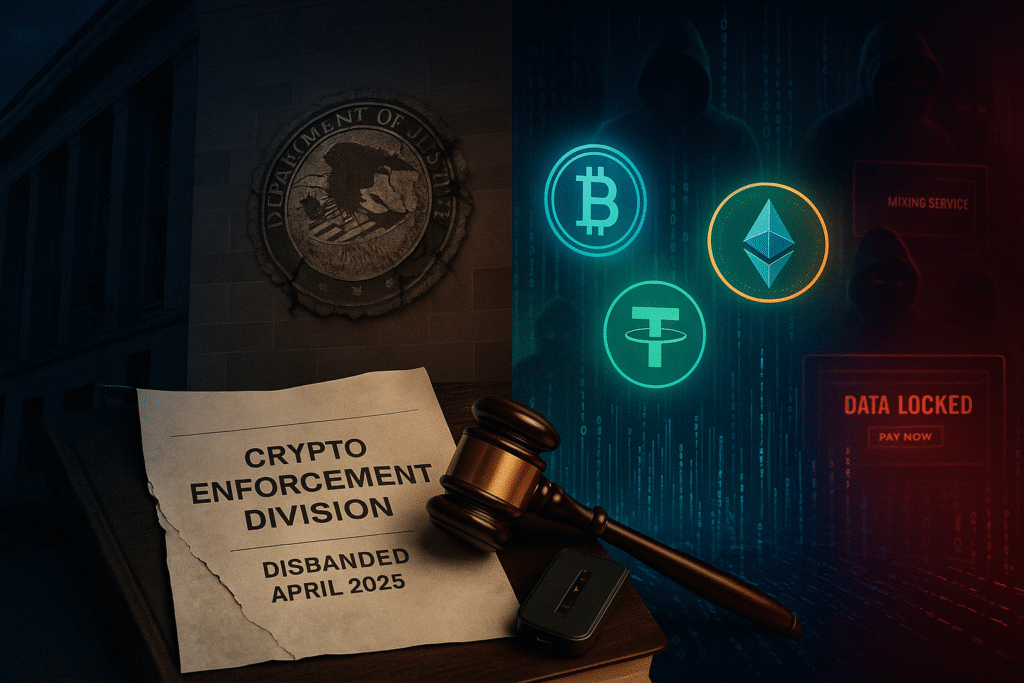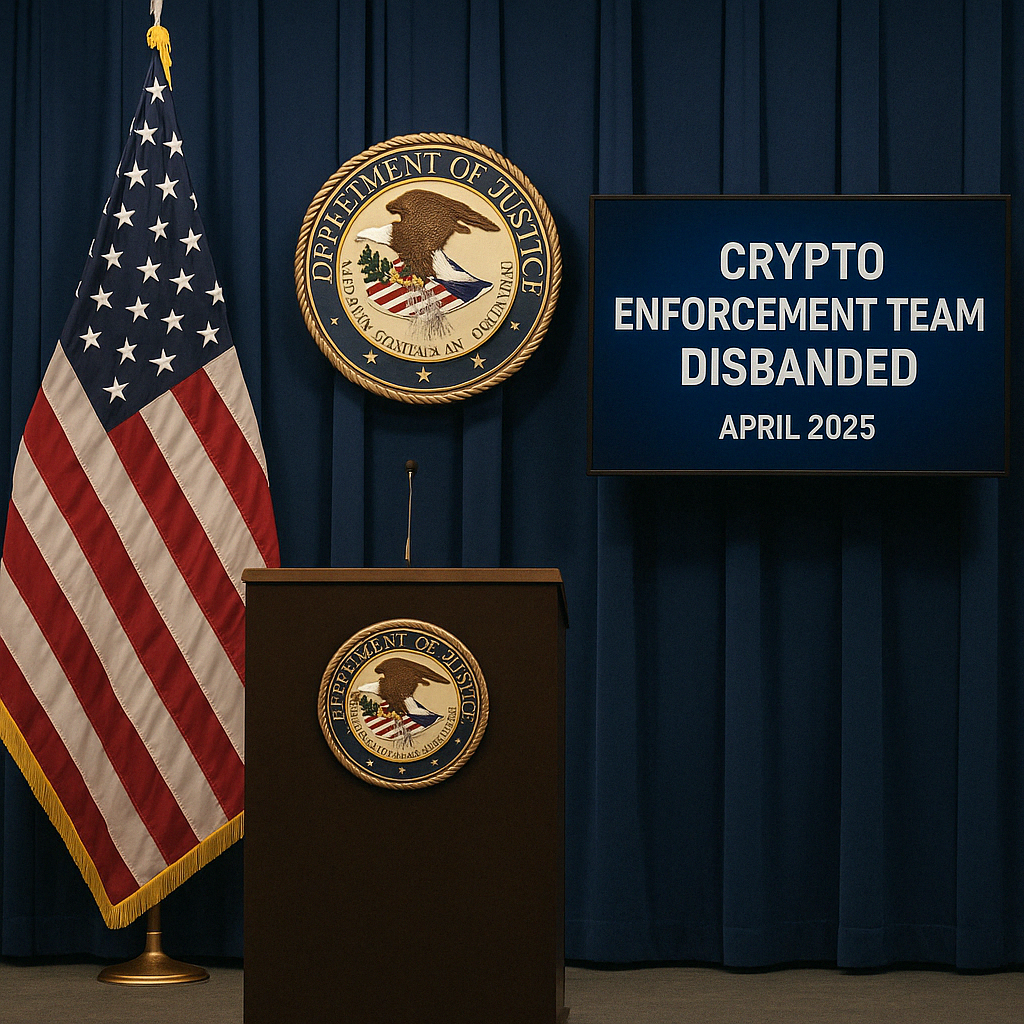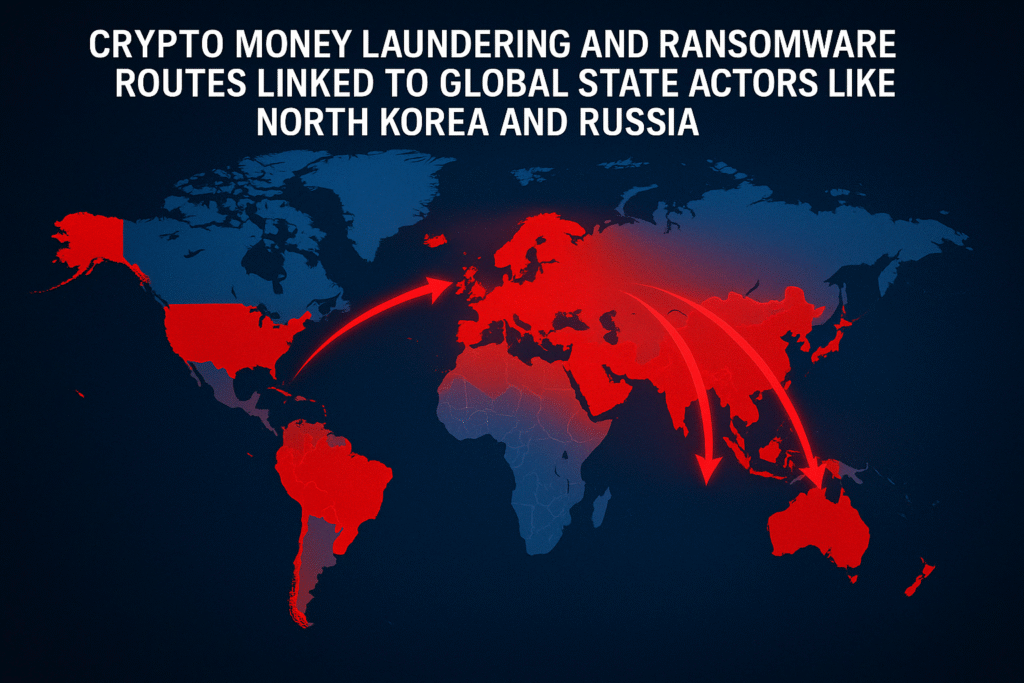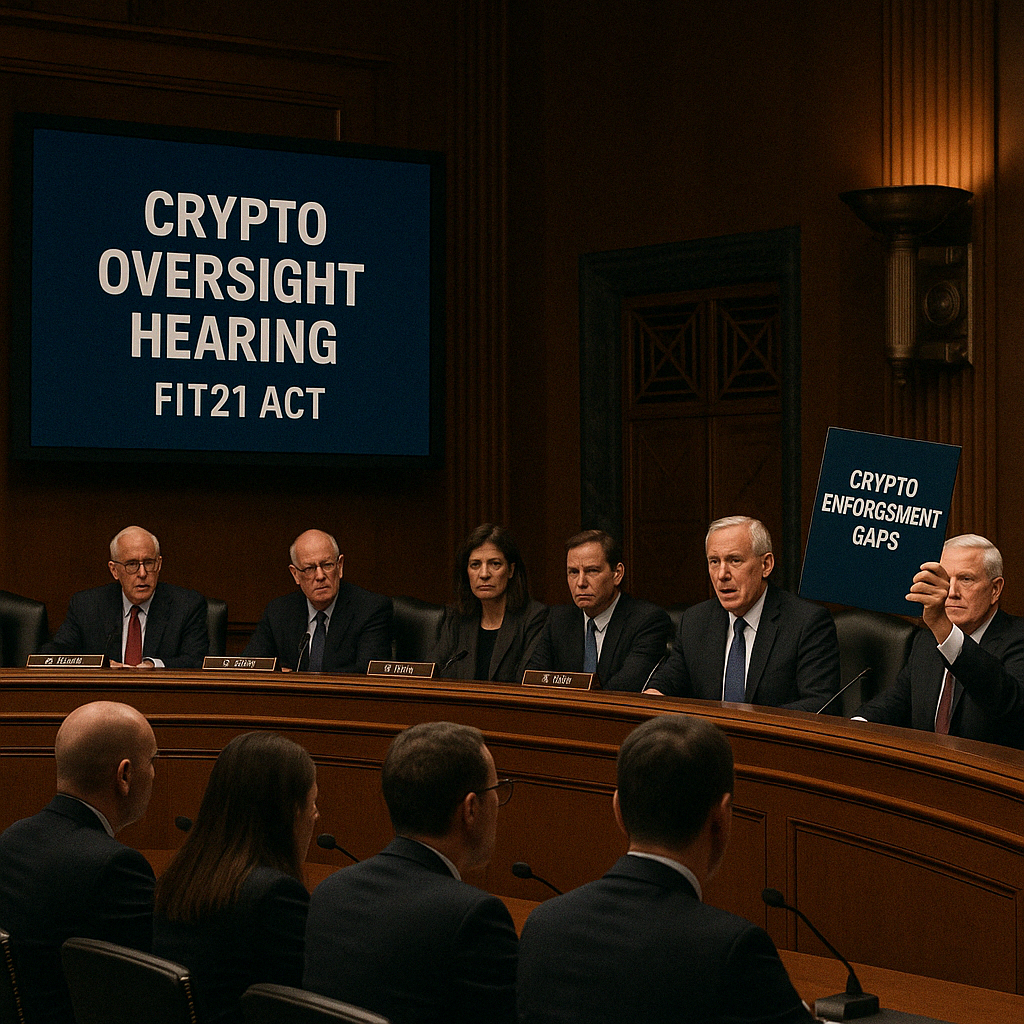
In April 2025, the U.S. quietly disbanded the very team that fined Binance $4.3 billion for money laundering. What happens now?
The Department of Justice’s abrupt decision to eliminate its National Cryptocurrency Enforcement Team (NCET) may seem procedural—but the consequences are anything but. Ransomware and Crypto extortion totaled $459.8 million in 2024, and crypto investment fraud cost victims $3.7 billion. The disbandment of the DOJ’s crypto enforcement arm signals more than a shift in agency priorities; it opens a gaping hole in America’s cybercrime defenses at a time when global adversaries are watching closely.
This move wasn’t made in a vacuum. In line with President Trump’s April 2025 executive order to end what he called “regulatory weaponization,” the DOJ has shifted its focus away from specific crypto enforcement to prioritize traditional crimes like terrorism and drug trafficking. While civil financial regulators remain in place, their tools don’t replace DOJ’s criminal prosecution capabilities.
This post explores the collapse of federal crypto enforcement, its global ripple effects, and what industry leaders and policymakers must do next.
What Just Happened? DOJ’s Quiet Exit from Crypto Enforcement

Formation and Purpose of NCET
The DOJ established the National Cryptocurrency Enforcement Team in February 2022 to address the increasing use of cryptocurrencies in criminal activity. Its mission included prosecuting crypto money laundering, monitoring exchanges, and tackling anonymity-enhancing services like mixers and tumblers. It also coordinated with other agencies on ransomware and cyber-enabled crime.
Major Wins Before Disbandment
Before its dissolution, NCET played a crucial role in major enforcement actions. Its most high-profile success was the 2023 Binance case, which resulted in a $4.3 billion settlement and a guilty plea from CEO Changpeng Zhao for violating anti-money laundering laws (CNBC). The team also led investigations into Tornado Cash and supported the recovery of funds from the 2016 Bitfinex hack.
Why It Was Disbanded
The official explanation came in an internal DOJ memo, citing the Trump administration’s executive order to end the perceived overregulation of digital assets. The move aligns with Trump’s pro-crypto rhetoric and his family’s involvement in ventures like World Liberty Financial. The memo argued that the DOJ would redirect resources to combating terrorism, narcotics, and fraud—implicitly deprioritizing crypto enforcement.
What the Exit Memo Revealed
Deputy Attorney General Todd Blanche criticized the Biden administration’s “regulation by prosecution” approach. The memo made clear that the DOJ would step back from criminal crypto cases, leaving oversight to civil regulators like the SEC and CFTC. It also hinted at internal concerns that crypto-focused enforcement risked politicization in the current climate.
Why We Still Need Crypto Enforcement in 2025
Ransomware and Crypto: Still Deeply Intertwined
In 2024, ransomware actors extorted $459.8 million in cryptocurrency, up 2% from the previous year (Chainalysis). Groups like LockBit continue to depend on crypto payments for anonymity and global reach. Without DOJ’s active deterrence, these groups face fewer consequences for attacks on hospitals, schools, and infrastructure.
Investor Fraud Is Soaring

Fraudulent investment schemes using crypto money platforms—especially pig-butchering scams—led to $3.7 billion in reported losses in 2024 alone, according to the FBI’s Internet Crime Complaint Center (IC3 Report). Many of these scams originate abroad and target U.S. investors via social media. Criminal enforcement is vital to disrupting these cross-border operations.
Money Laundering at Scale
North Korea and other state-linked actors rely heavily on crypto mixers to launder stolen funds. In 2023, Tornado Cash was used to funnel over $1 billion in illicit funds (U.S. Treasury). Weakening U.S. enforcement capacity removes a critical barrier to these tactics.
Why Criminals Still Prefer Crypto
Cryptocurrency’s blend of decentralization, pseudonymity, and borderless transactions creates ideal conditions for abuse. Without credible threats of prosecution, crypto becomes a safer haven for money laundering, fraud, and ransomware coordination.
5 Immediate Risks Sparked by the DOJ’s Exit
Surge in Crypto Money Laundering
With fewer prosecutions, mixers and illicit exchanges are likely to thrive. Chainalysis estimates half a billion in illicit funds were laundered through mixers in 2023 alone (Chainalysis). Expect that number to rise.
Ransomware Group Resurgence

LockBit, Conti, and other major ransomware syndicates may act more aggressively, confident there will be no DOJ-led disruption.
Explosion in Investor Fraud
The $3.7 billion lost to scams in 2024 could balloon further, especially if perpetrators believe enforcement agencies no longer prioritize crypto crimes.
Regulatory Gaps & Fragmentation
Agencies like the SEC and CFTC lack DOJ’s criminal prosecution tools. As the DOJ steps back, enforcement becomes patchy, inconsistent, and slower.
U.S. Becoming a Safe Haven
In 2023, North Korea laundered $374 million through crypto. With lighter scrutiny, international cybercriminals may increasingly operate through U.S.-based platforms.
A Boost for Criminals: Why This Matters Globally
State Actors Will Take Advantage

Groups like North Korea’s Lazarus Group and Hamas have used crypto for financing. Lazarus alone has stolen $3 billion in crypto since 2016 (Recorded Future). Lax enforcement invites further abuse.
Global Crypto Crime Networks
Chainalysis estimates $20.6 billion in crypto crime in 2024, 70% tied to terrorism, sanctions evasion, and organized cybercrime (Chainalysis). Many of these operations are global in scope.
Undermining International Collaboration
Organizations like Europol and FATF rely on U.S. enforcement capacity to support global investigations. The DOJ’s retreat may weaken international cooperation and intelligence sharing.
A Message to Criminals Worldwide
Disbanding NCET signals a dramatic reduction in U.S. deterrence. As seen in the AI-Powered Cyberwarfare in 2025 post, global adversaries exploit gaps in American cyber defenses—and this is a big one.
What Comes Next: Will Congress or CISA Step In?
FIT21 and Other Pending Bills

The Financial Innovation and Technology for the 21st Century Act (FIT21) passed the House in May 2024 but stalled in the Senate (CoinDesk). Its future is uncertain without bipartisan momentum.
SEC’s New Crypto Task Force
Created in January 2025, this SEC unit aims to clarify crypto rules—but focuses on civil, not criminal, matters (SEC).
CISA’s Limited Role
The Cybersecurity and Infrastructure Security Agency can track ransomware incidents, but lacks legal authority to enforce crypto-specific crimes (CISA).
FinCEN’s Opportunity
The Treasury Department’s Financial Crimes Enforcement Network (FinCEN) may issue new AML guidance or rules to fill the DOJ gap.
How Businesses & Policymakers Can Prepare Now
For Businesses – Strengthen Compliance
The $4.3 billion Binance penalty illustrates the stakes (CNBC). Companies must:
- Conduct regular AML/KYC audits
- Use blockchain analytics tools
- Monitor for mixer-related transactions
- Train staff on evolving scams
For a deeper look at internal vulnerabilities, see AI-Powered Insider Threats.
For Policymakers – Clarify Roles & Jurisdiction
Congress must move quickly to assign specific enforcement duties to agencies like the SEC, CFTC, and FinCEN. Delayed action allows abuse to flourish.
Training & Public Education
Investor education on scams like pig-butchering is essential. Agencies and firms should collaborate on warnings, campaigns, and resource hubs.
Global Collaboration
Align with FATF guidelines (FATF) and work with Europol to ensure cross-border enforcement.
Conclusion: What Crypto Enforcement Looks Like in a Post-DOJ World
The disbandment of the DOJ’s crypto enforcement team leaves a dangerous vacuum. Without criminal prosecution, the U.S. is signaling to cybercriminals that the rules have changed—and not in a good way.
Unless Congress or another agency acts swiftly, the U.S. risks becoming a preferred jurisdiction for money laundering, ransomware coordination, and crypto-enabled fraud. Financial regulators alone cannot plug these gaps. Businesses must prepare independently, investing in compliance, intelligence, and training.
We cover stories like this in our newsletter—subscribe here to stay ahead of the next enforcement shake-up.
If 2024 was bad for crypto crime, 2025 could be worse. And without urgent action, 2026 may make this look tame.
For additional context on emerging threats, read Shocking AI-Powered Cybersecurity Threats in 2025.
Key Takeaways
- The DOJ’s crypto enforcement team (NCET) was disbanded in April 2025 under Trump’s executive order.
- Crypto crime is rising: $459.8M in ransomware and $3.7B in fraud in 2024.
- The exit leaves five major risks: increased laundering, ransomware, fraud, weak regulation, and emboldened global actors.
- Congress, CISA, and FinCEN may try to fill the gap—but none can replace DOJ’s criminal enforcement power.
- Businesses must adopt stronger compliance tools; policymakers must act fast to avoid a digital crime surge.
FAQ
Q1: Why did the DOJ disband its crypto enforcement team? A: The move followed a Trump executive order aiming to reduce regulatory enforcement in the digital asset space.
Q2: Does this mean crypto is no longer regulated? A: No—but criminal enforcement has weakened. Agencies like the SEC and CFTC still handle civil matters.
Q3: Is crypto now riskier for investors? A: Yes. Scams and frauds are likely to increase with less fear of prosecution.
Q4: Will ransomware attacks increase? A: Likely. Ransomware groups depend on crypto payments and are deterred by strong enforcement.
Q5: What can companies do to protect themselves? A: Invest in compliance tools, train staff, use blockchain analytics, and stay alert to evolving scams.
